Abstract
1. Cardiovascular changes in lactating rats have been traced from the first day post-partum to the end of the third week of lactation. The pattern of changes showed three phases.
2. Between days 1 and 5 of lactation there were sharp rises in both cardiac output and in the blood flow/g tissue for most organs, but little change in the distribution of the cardiac output.
3. Between days 5 and 15 of lactation cardiac output remained steady. The blood flow to tissues actively involved in the body's response to lactation (mammary glands, liver, gastrointestinal tract) also remained at high steady levels, but the blood flow to other tissues declined due to a redistribution of the cardiac output away from them and towards the growing mammary glands and splanchnic organs.
4. Between days 15 and 22 of lactation there were further rises in both cardiac output and in the blood flow/g tissue for most organs.
5. It is suggested that the increases in organ blood flows that occurred in the first few days after parturition (days 1-5) and at the end of lactation (days 15-22) were largely dependent on increases in cardiac output and may represent the maternal response to rapidly rising demands from the young at these times.
Full text
PDF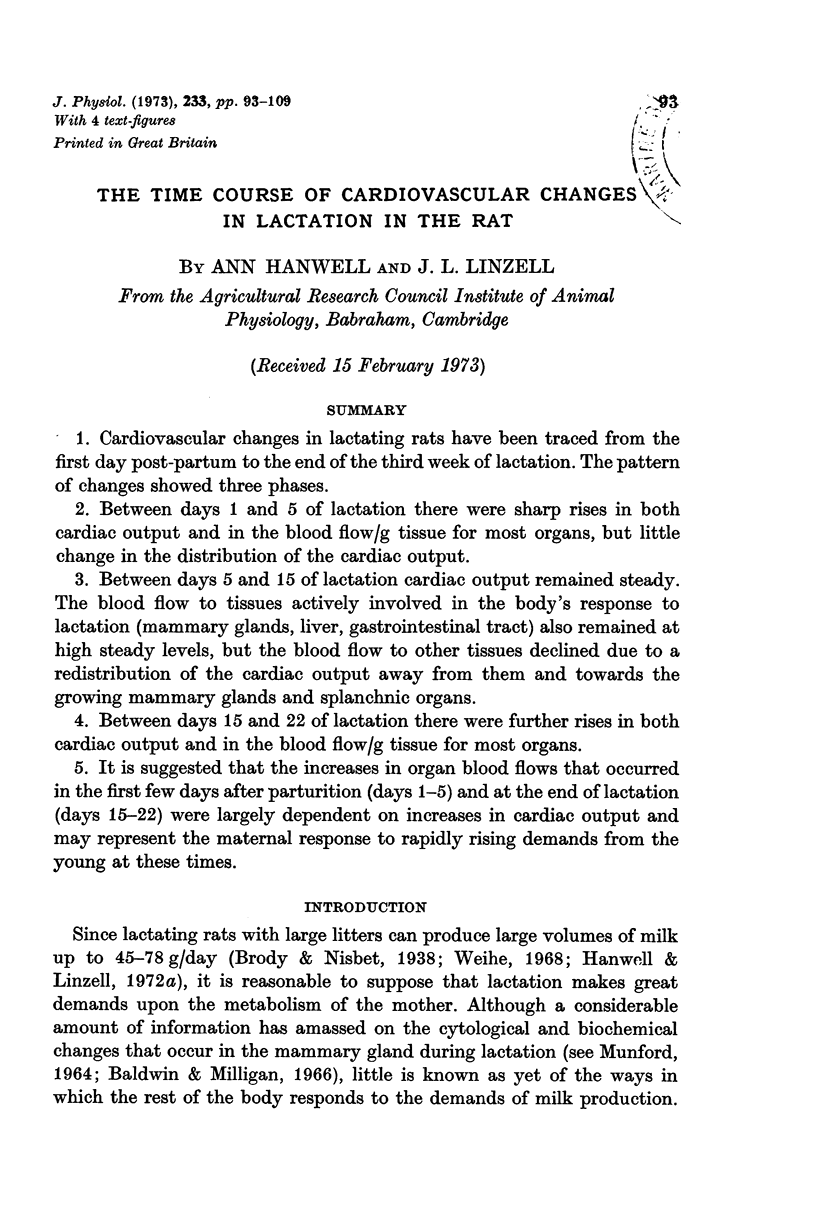
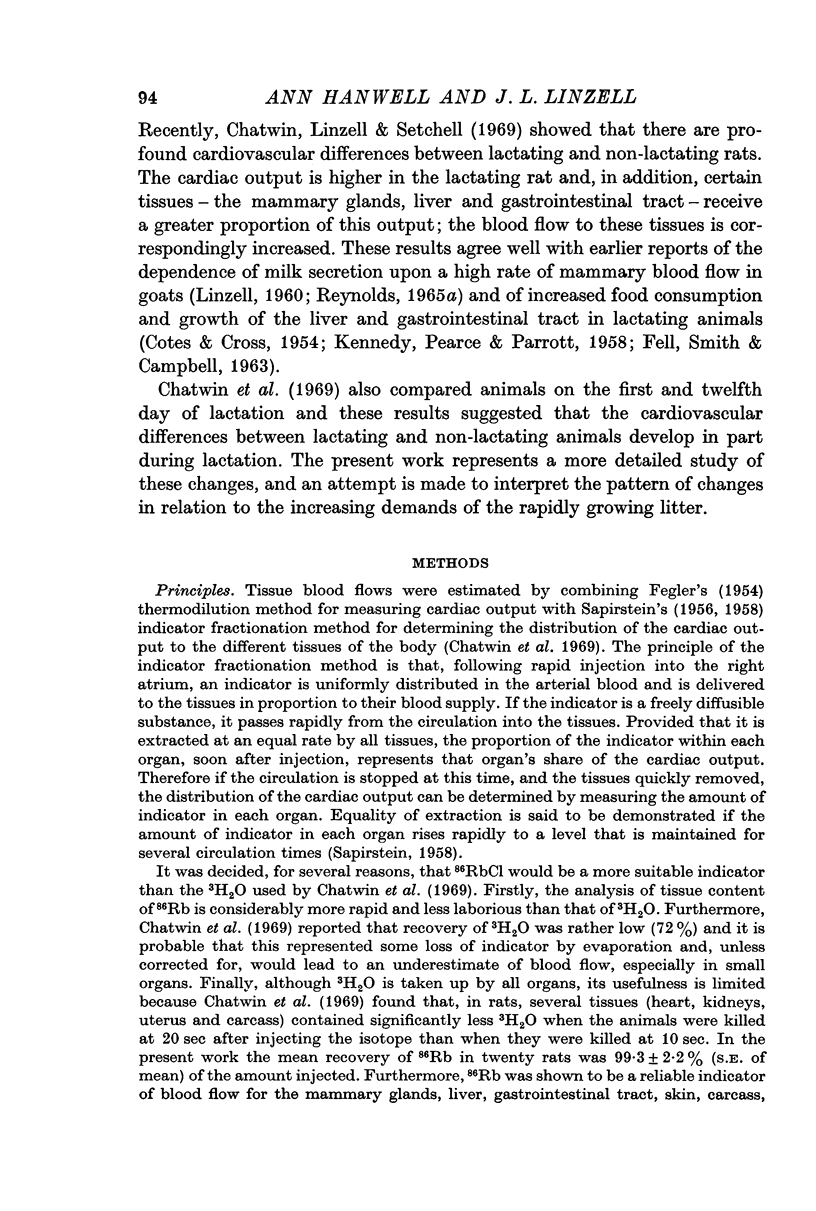
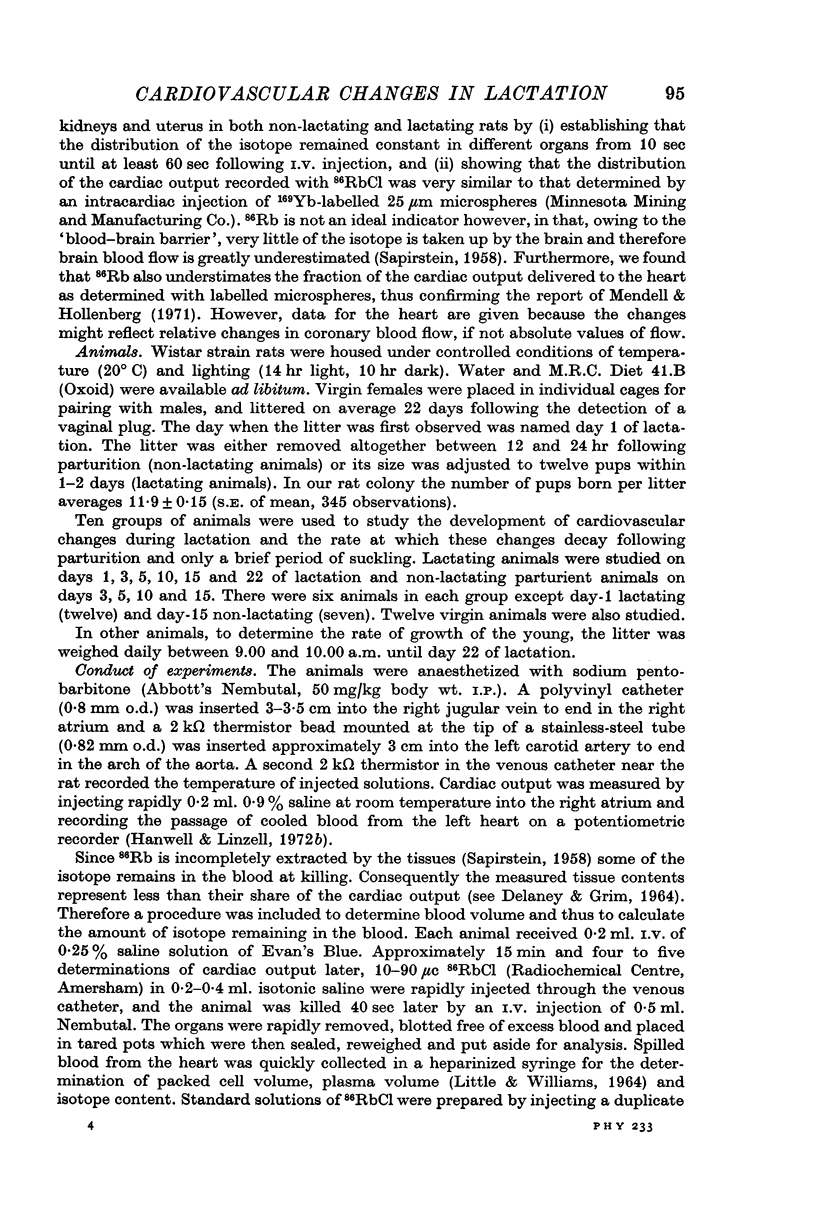

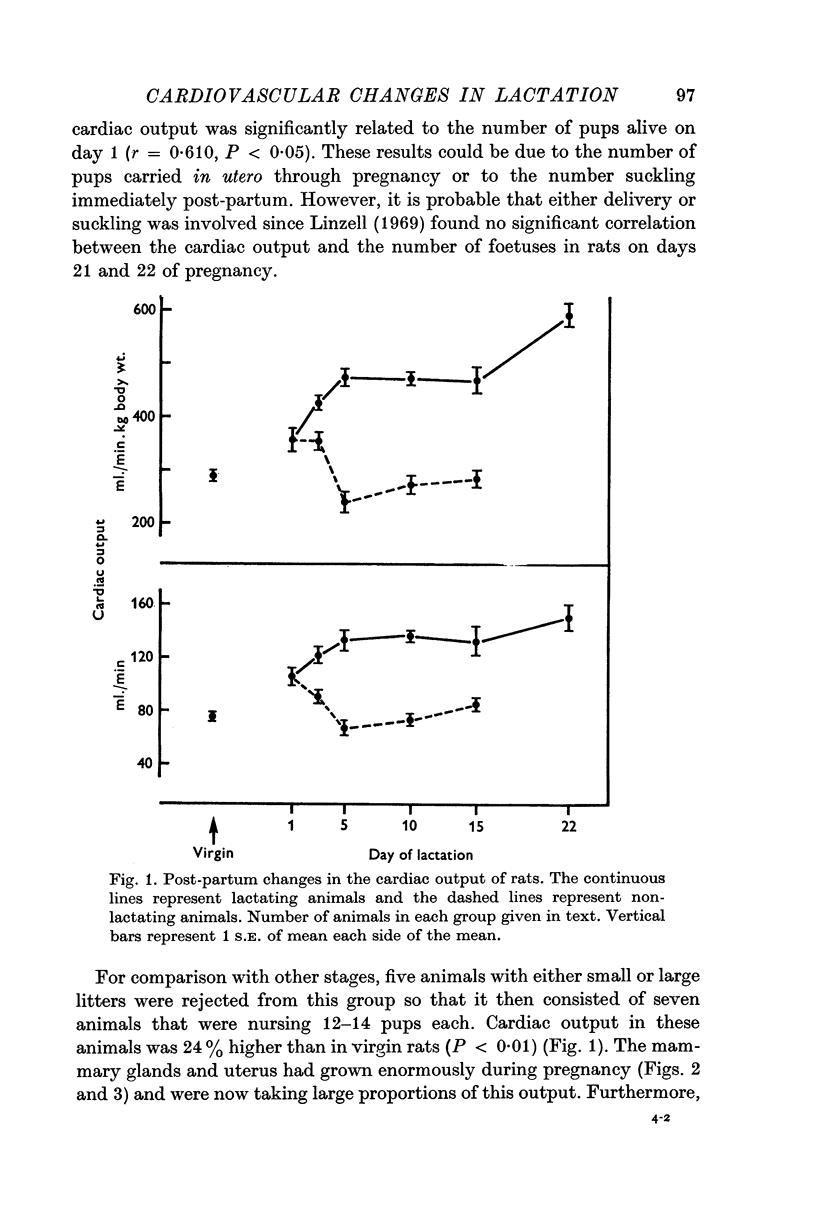
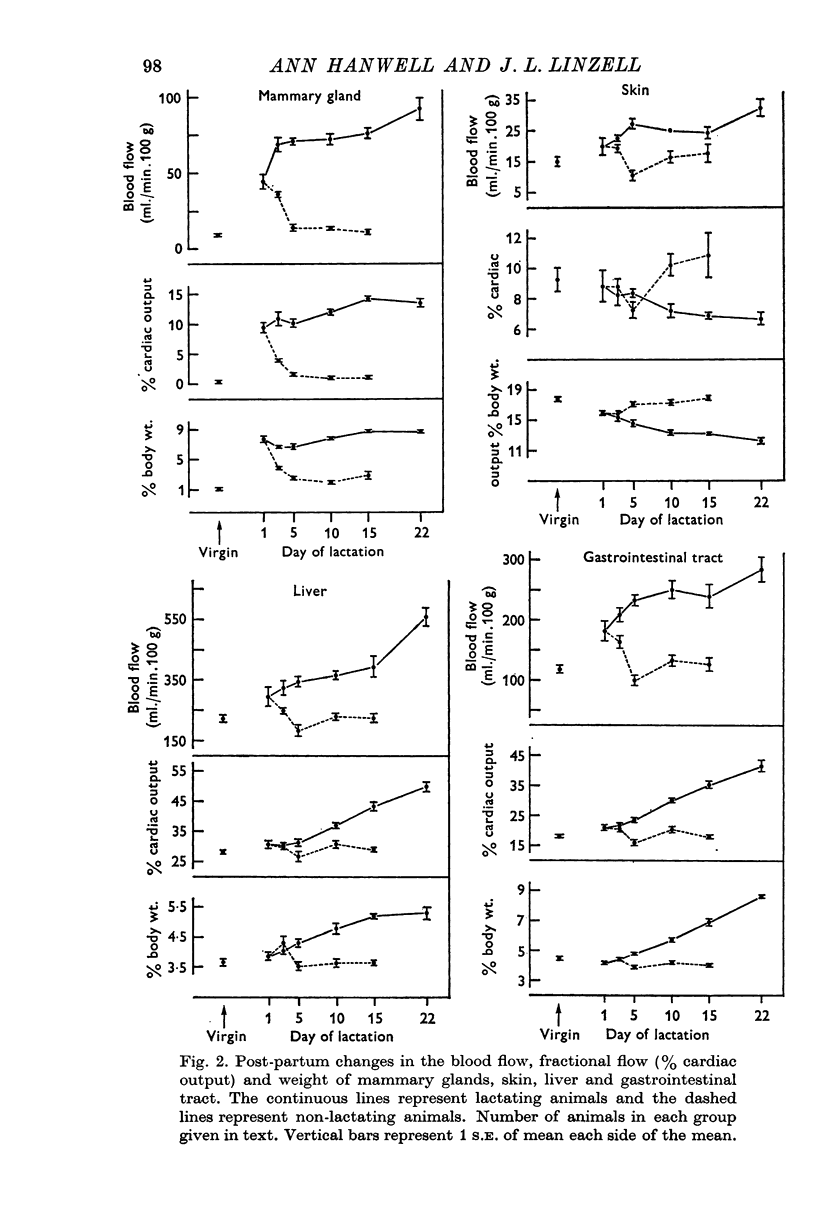

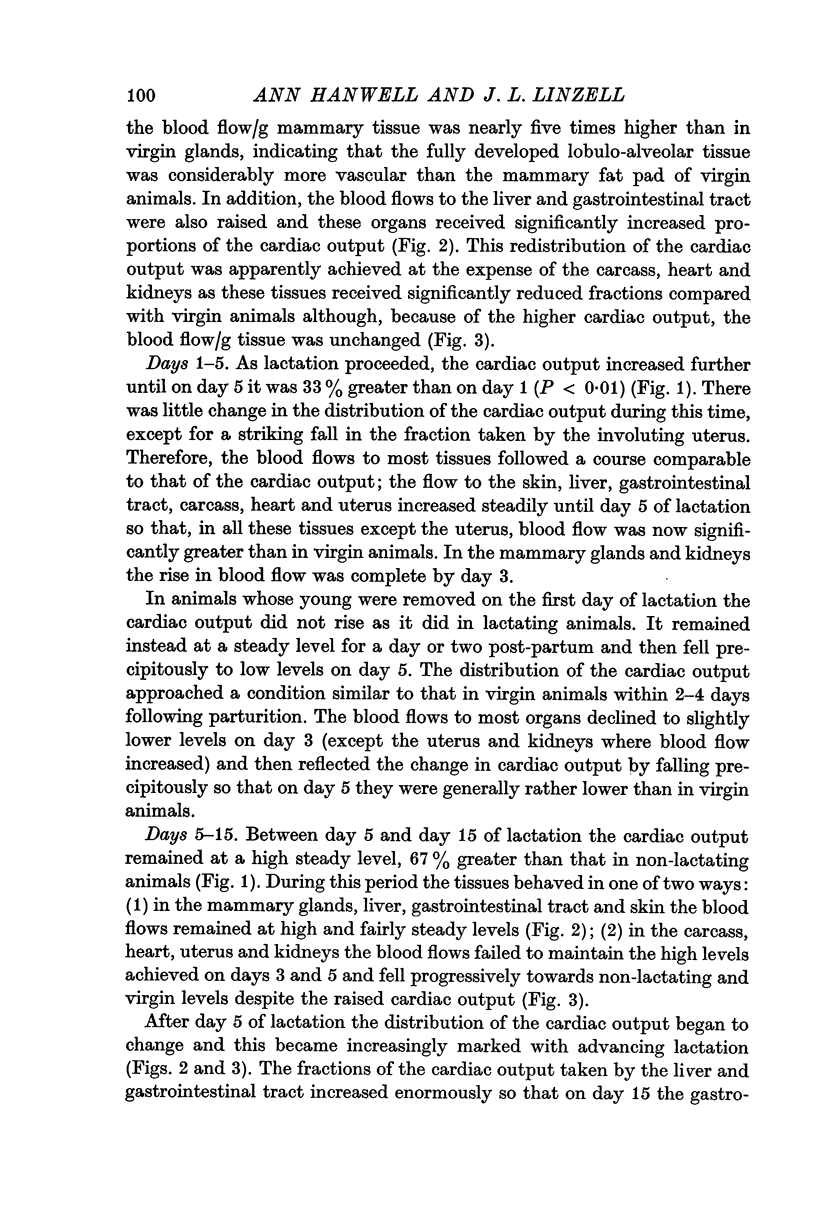
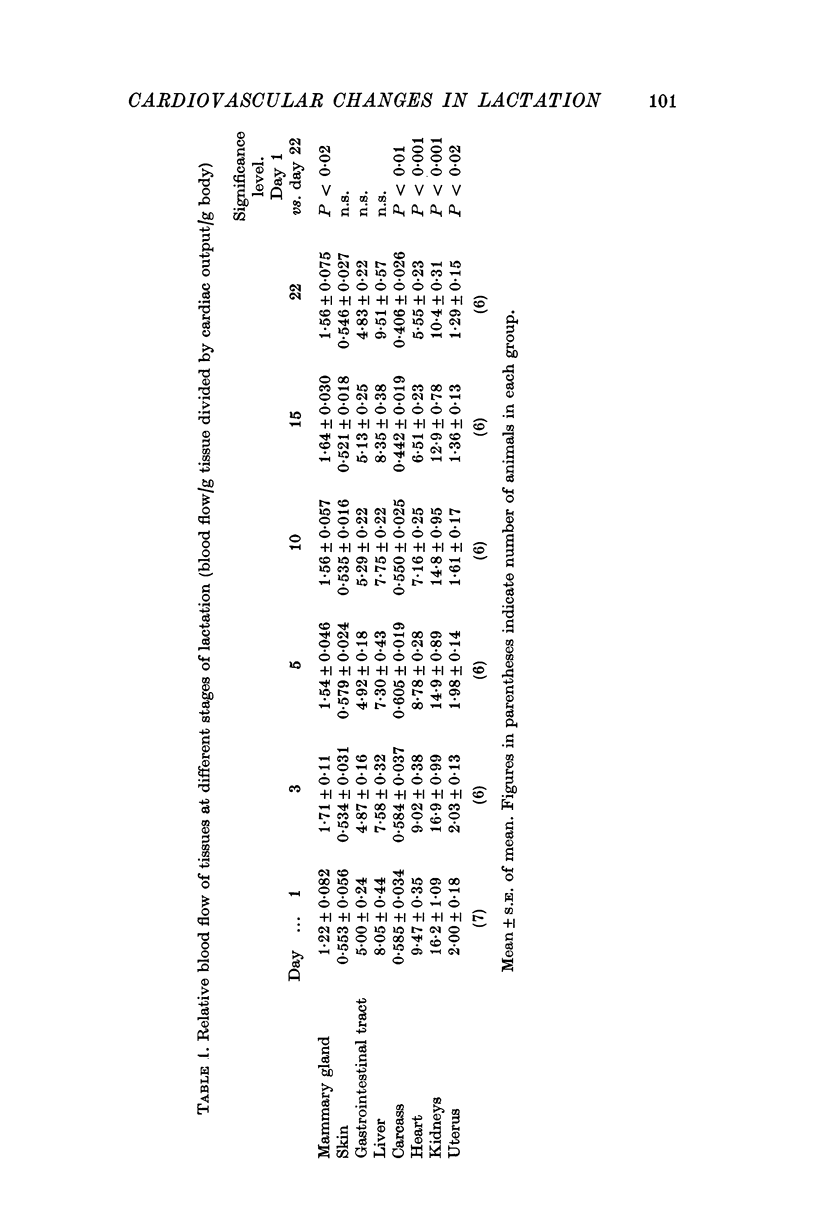
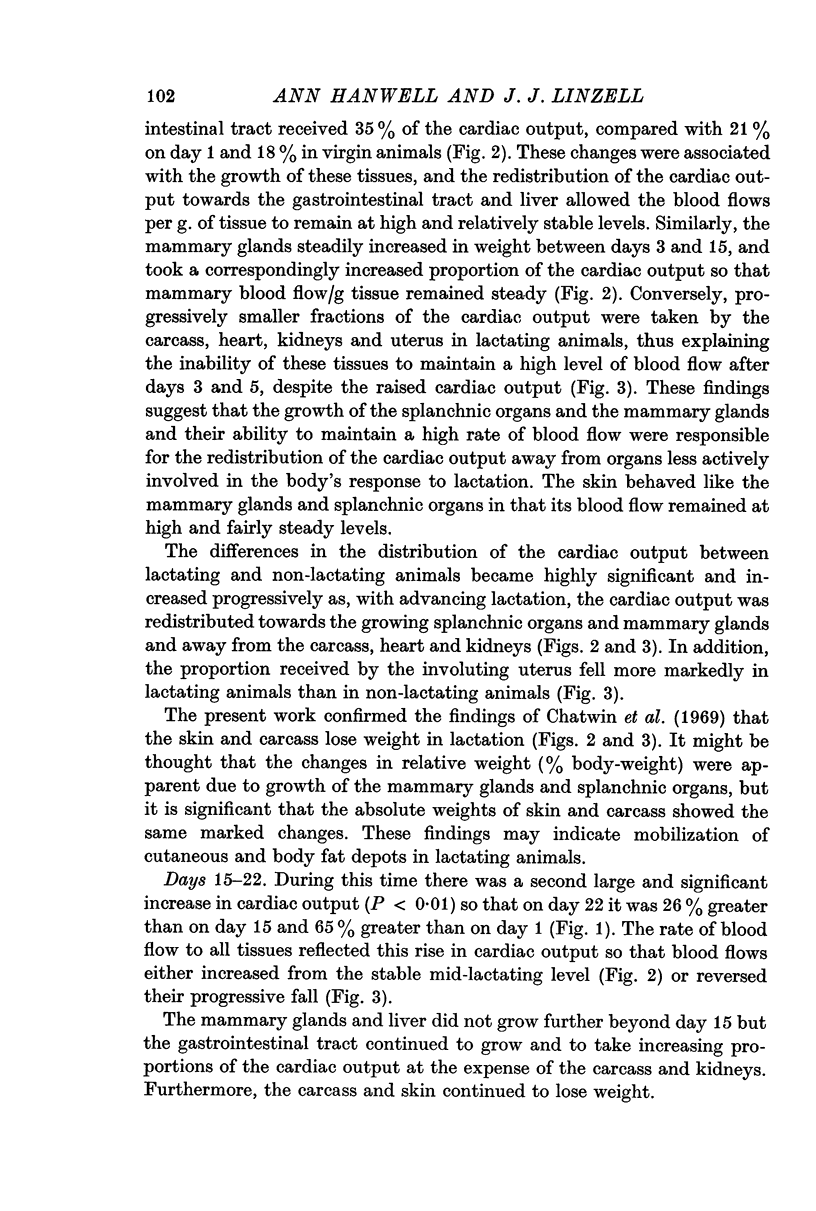
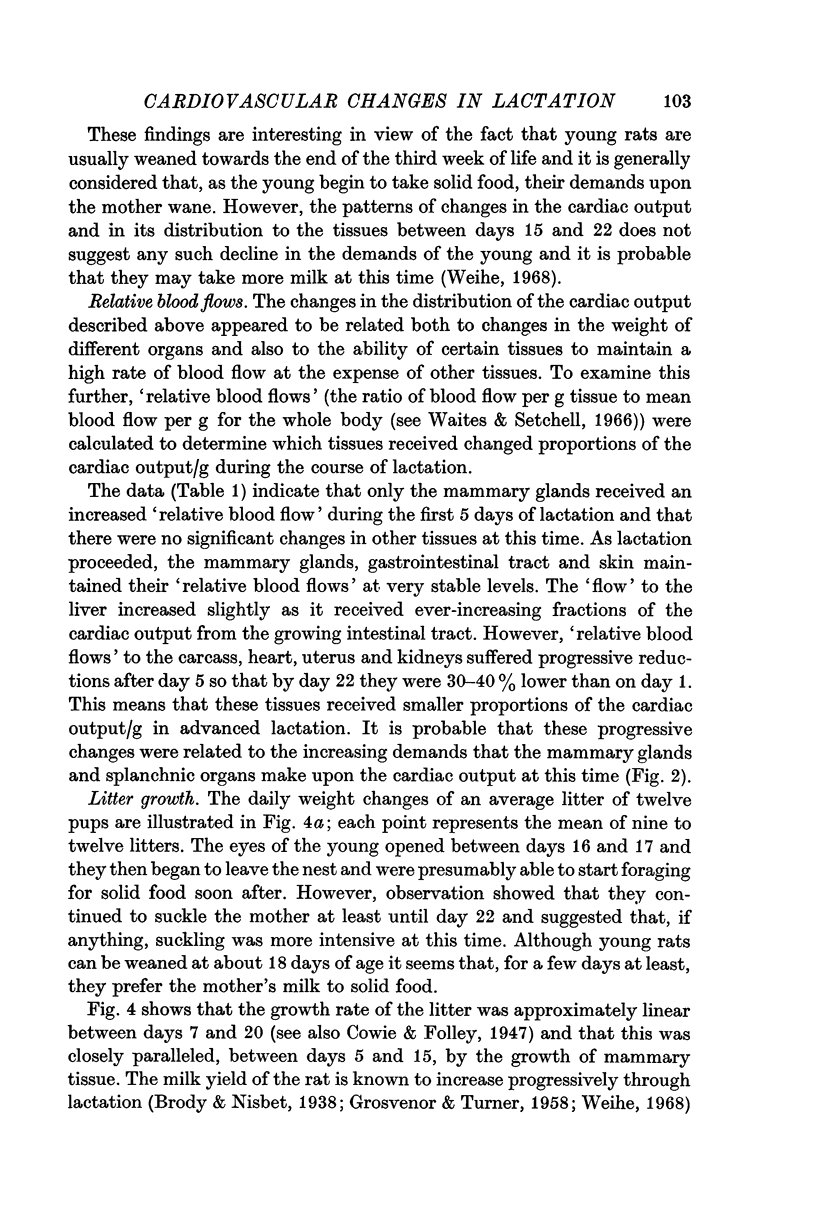
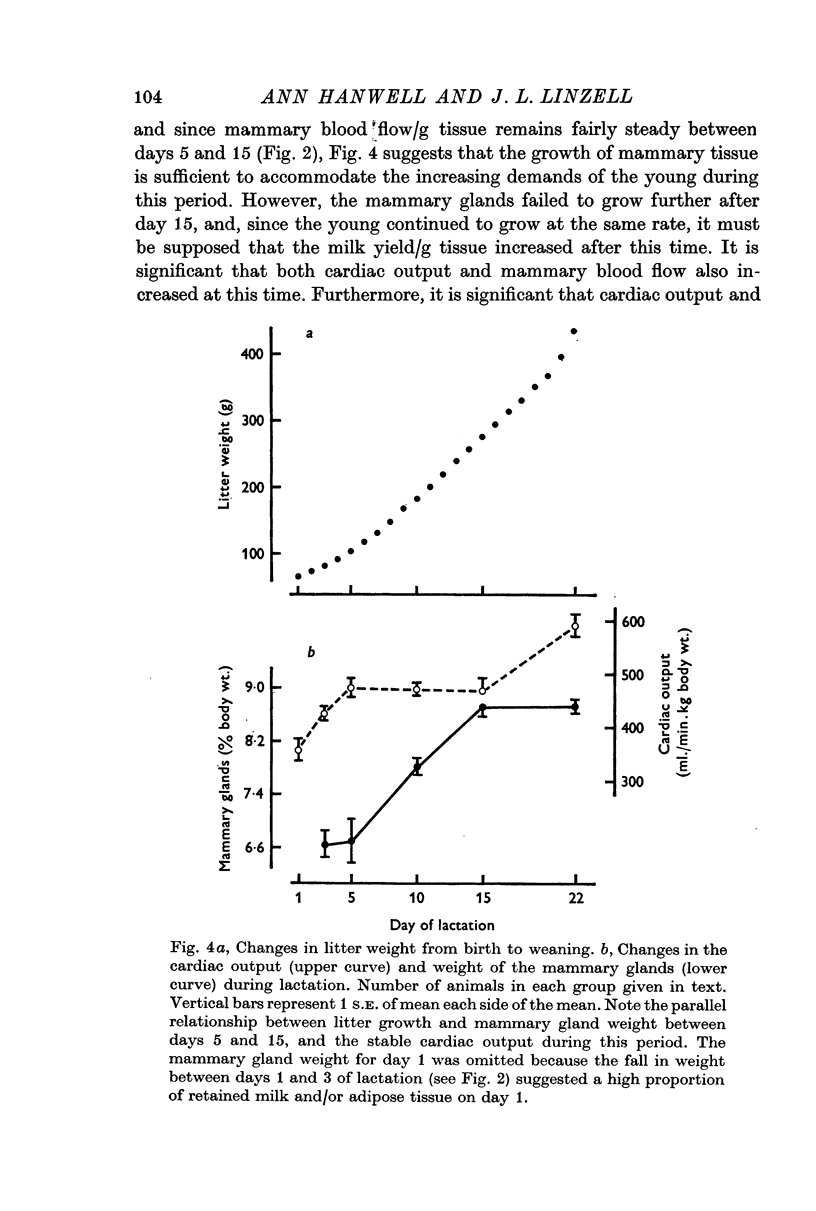
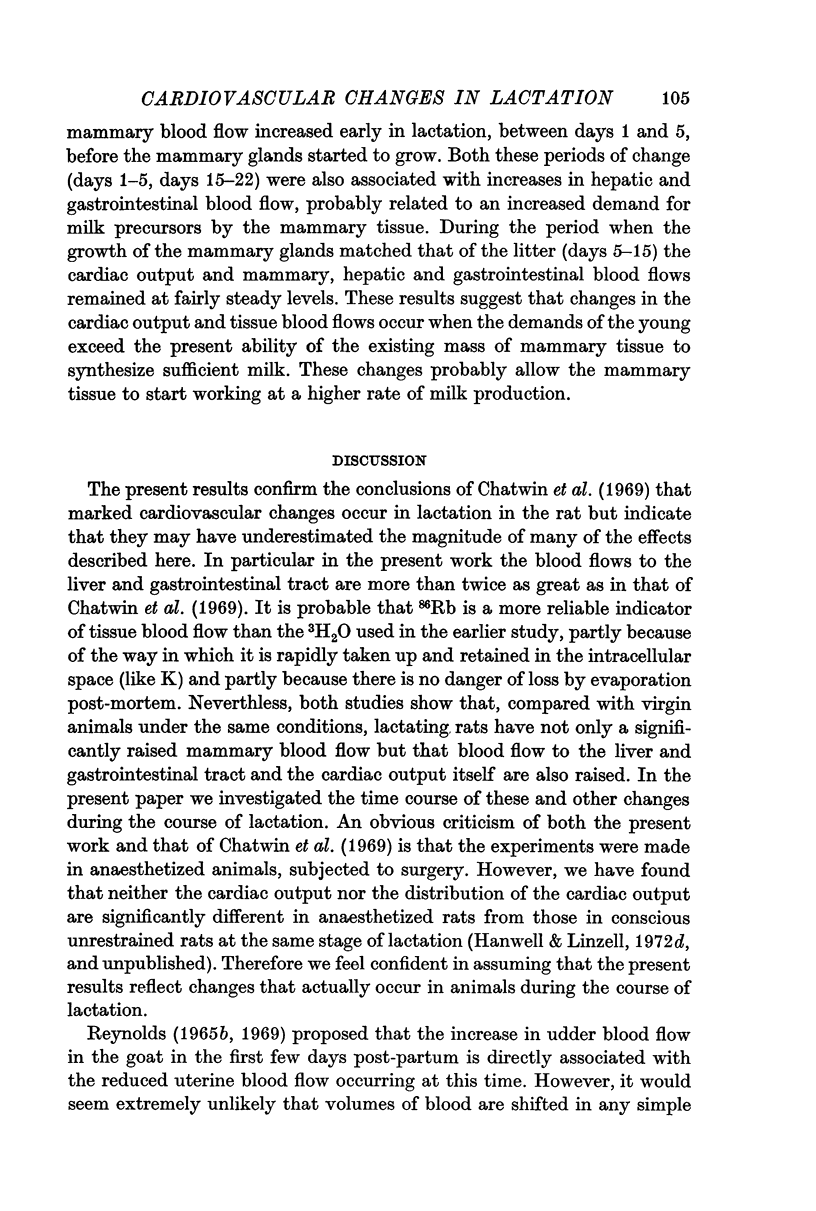
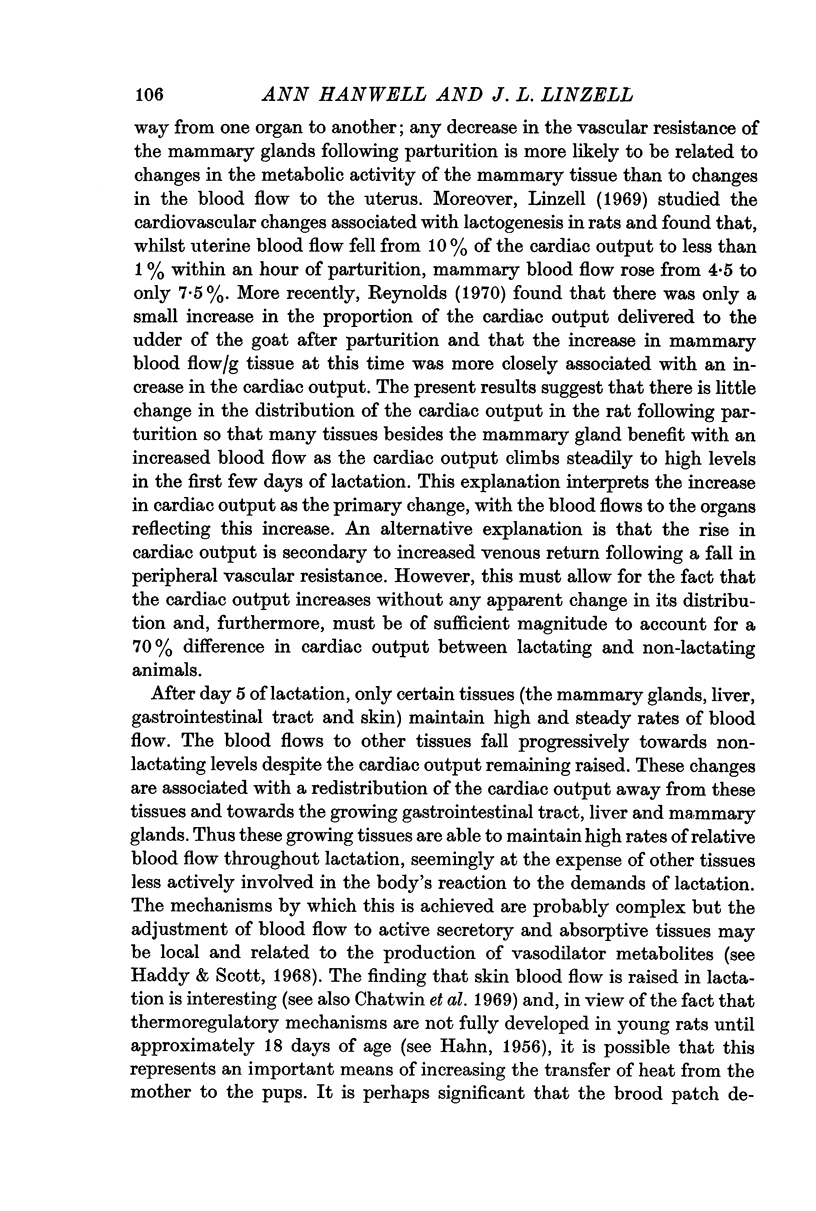

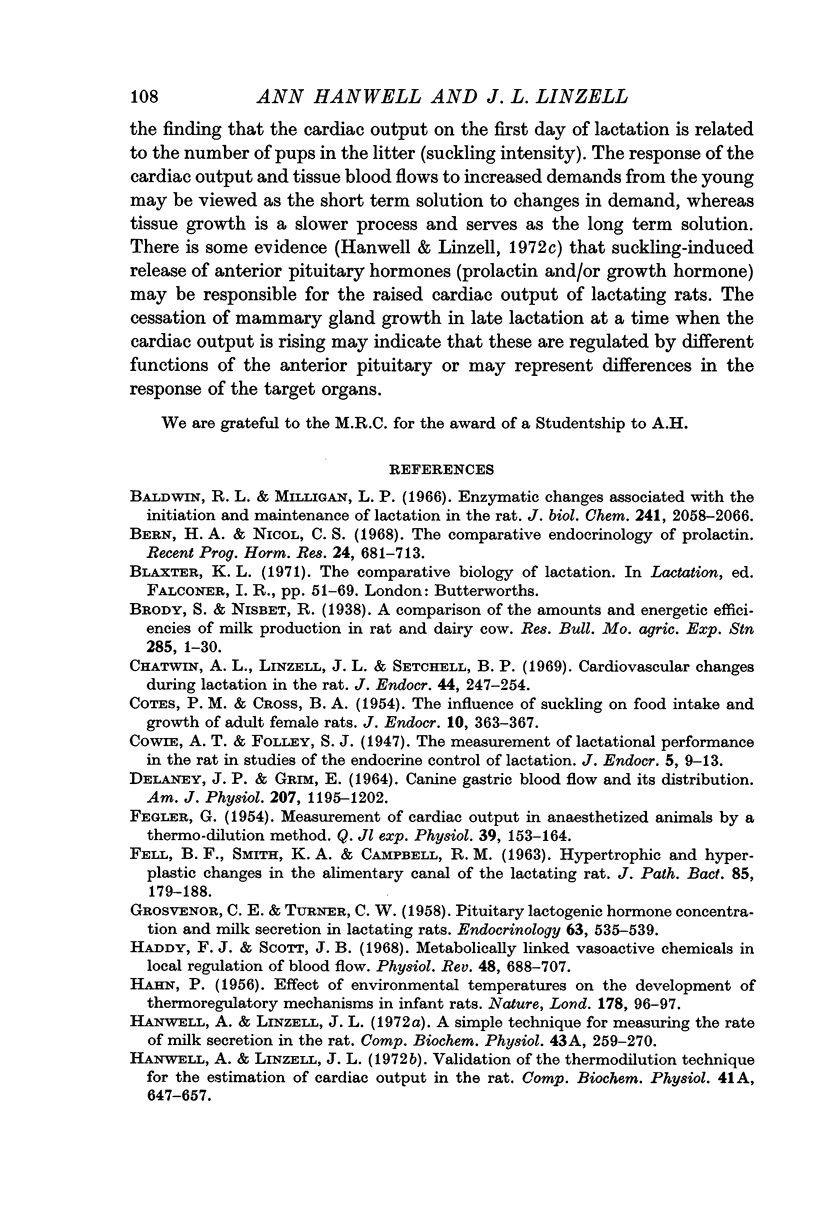
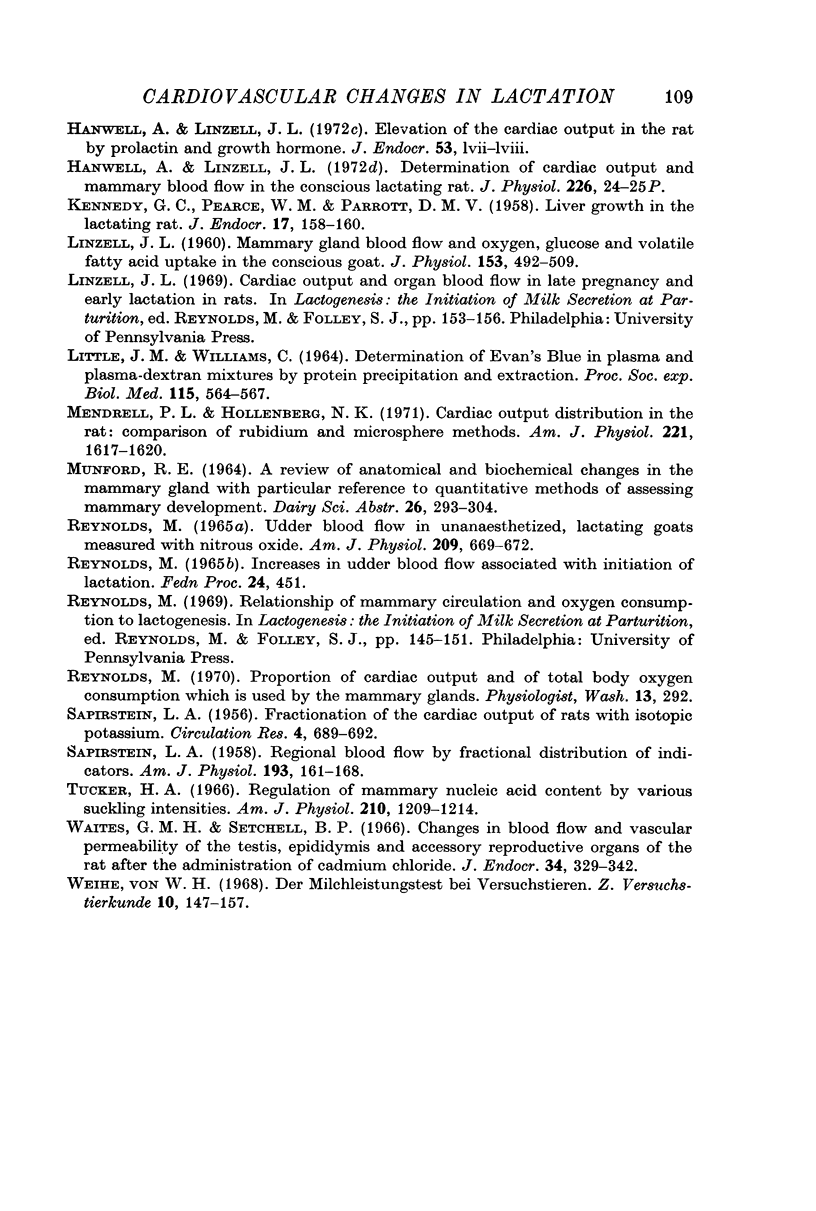
Selected References
These references are in PubMed. This may not be the complete list of references from this article.
- Baldwin R. L., Milligan L. P. Enzymatic changes associated with the initiation and maintenance of lactation in the rat. J Biol Chem. 1966 May 10;241(9):2058–2066. [PubMed] [Google Scholar]
- Bern H. A., Nicoll C. S. The comparative endocrinology of prolactin. Recent Prog Horm Res. 1968;24:681–720. doi: 10.1016/b978-1-4831-9827-9.50019-8. [DOI] [PubMed] [Google Scholar]
- COTES P. M., CROSS B. A. The influence of suckling on food intake and growth of adult female rats. J Endocrinol. 1954 Jun;10(4):363–367. doi: 10.1677/joe.0.0100363. [DOI] [PubMed] [Google Scholar]
- Chatwin A. L., Linzell J. L., Setchell B. P. Cardiovascular changes during lactation in the rat. J Endocrinol. 1969 Jun;44(2):247–254. doi: 10.1677/joe.0.0440247. [DOI] [PubMed] [Google Scholar]
- DELANEY J. P., GRIM E. CANINE GASTRIC BLOOD FLOW AND ITS DISTRIBUTION. Am J Physiol. 1964 Dec;207:1195–1202. doi: 10.1152/ajplegacy.1964.207.6.1195. [DOI] [PubMed] [Google Scholar]
- FEGLER G. Measurement of cardiac output in anaesthetized animals by a thermodilution method. Q J Exp Physiol Cogn Med Sci. 1954;39(3):153–164. doi: 10.1113/expphysiol.1954.sp001067. [DOI] [PubMed] [Google Scholar]
- FELL B. F., SMITH K. A., CAMPBELL R. M. Hypertrophic and hyperplastic changes in the alimentary canal of the lactating rat. J Pathol Bacteriol. 1963 Jan;85:179–188. doi: 10.1002/path.1700850117. [DOI] [PubMed] [Google Scholar]
- GROSVENOR C. E., TURNER C. W. Pituitary lactogenic in lactating rats. Endocrinology. 1958 Nov;63(5):535–539. doi: 10.1210/endo-63-5-535. [DOI] [PubMed] [Google Scholar]
- HAHN P. Effect of environmental temperatures on the development of thermoregulatory mechanisms in infant rats. Nature. 1956 Jul 14;178(4524):96–97. doi: 10.1038/178096a0. [DOI] [PubMed] [Google Scholar]
- Haddy F. J., Scott J. B. Metabolically linked vasoactive chemicals in local regulation of blood flow. Physiol Rev. 1968 Oct;48(4):688–707. doi: 10.1152/physrev.1968.48.4.688. [DOI] [PubMed] [Google Scholar]
- KENNEDY G. C., PEARCE W. M., PARROTT D. M. Liver growth in the lactating rat. J Endocrinol. 1958 Jul;17(2):158–160. doi: 10.1677/joe.0.0170158. [DOI] [PubMed] [Google Scholar]
- LINZELL J. L. Mammary-gland blood flow and oxygen, glucose and volatile fatty acid uptake in the conscious goat. J Physiol. 1960 Oct;153:492–509. doi: 10.1113/jphysiol.1960.sp006550. [DOI] [PMC free article] [PubMed] [Google Scholar]
- LITTLE J. M., WILLIAMS C. DETERMINATION OF EVANS' BLUE IN PLASMA AND PLASMA-DEXTRAN MIXTURES BY PROTEIN PRECIPITATION AND EXTRACTION. Proc Soc Exp Biol Med. 1964 Feb;115:564–567. doi: 10.3181/00379727-115-28970. [DOI] [PubMed] [Google Scholar]
- Mendell P. L., Hollenberg N. K. Cardiac output distribution in the rat: comparison of rubidium and microsphere methods. Am J Physiol. 1971 Dec;221(6):1617–1620. doi: 10.1152/ajplegacy.1971.221.6.1617. [DOI] [PubMed] [Google Scholar]
- Reynolds M. Udder blood flow in unanesthetized, lactating goats measured with nitrous oxide. Am J Physiol. 1965 Oct;209(4):669–672. doi: 10.1152/ajplegacy.1965.209.4.669. [DOI] [PubMed] [Google Scholar]
- SAPIRSTEIN L. A. Fractionation of the cardiac output of rats with isotopic potassium. Circ Res. 1956 Nov;4(6):689–692. doi: 10.1161/01.res.4.6.689. [DOI] [PubMed] [Google Scholar]
- SAPIRSTEIN L. A. Regional blood flow by fractional distribution of indicators. Am J Physiol. 1958 Apr;193(1):161–168. doi: 10.1152/ajplegacy.1958.193.1.161. [DOI] [PubMed] [Google Scholar]
- Swearingen K. C., Nicoll C. S. Prolactin turnover in rat adenohypophyses in vivo: its evaluation as a method for estimating secretion rates. J Endocrinol. 1972 Apr;53(1):1–15. doi: 10.1677/joe.0.0530001. [DOI] [PubMed] [Google Scholar]
- Tucker H. A. Regulation of mammary nucleic acid content by various suckling intensities. Am J Physiol. 1966 Jun;210(6):1209–1214. doi: 10.1152/ajplegacy.1966.210.6.1209. [DOI] [PubMed] [Google Scholar]
- Waites G. M., Setchell B. P. Changes in blood flow and vascular permeability of the testis, epididymis and accessory reproductive organs of the rat after the administration of cadmium chloride. J Endocrinol. 1966 Mar;34(3):329–342. doi: 10.1677/joe.0.0340329. [DOI] [PubMed] [Google Scholar]


